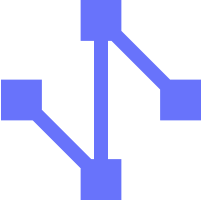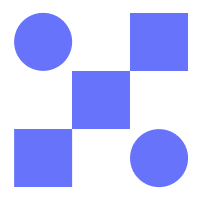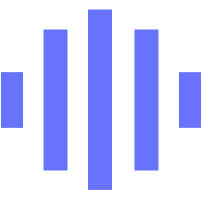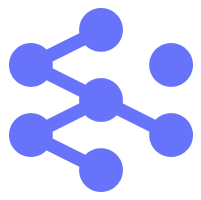Top Seed Talent Program
What We Are Looking For
“About the Program” 

The Top Seed Talent Program is an exclusive initiative launched by the ByteDance Seed team to attract top-tier university research talent. The program includes full-time positions for recent Ph.D. graduates and research internships for outstanding current students.
We are committed to identifying and recruiting the world's leading AI researchers globally to join us in pushing the boundaries of AI.

Firm technical conviction and passion
A willingness to tackle the industry's most challenging problems, explore uncharted technical paths.
Exceptional research capabilities
Demonstrate deep technical expertise in a specific area of AI, publish high-quality and impactful papers, or make significant open-source contributions.
Curiosity and Drive
Possess refined technical taste and intuition, coupled with curiosity, drive, and a proven track record. While past achievements are necessary, we equally value your research potential.
Research Topics

LLM
Research on next-generation foundation models, defining data science principles and scaling laws, exploring new pre-training paradigms, and pushing the boundaries of AI
Efficient architecture designs and training paradigms for foundation models
Code agent RL & test-time scaling
Coding agents for natural science
Multi-agent algorithms for coding agents
Reward models and their allocation for ultra-long agent tasks
Generalization of universal agents
Continuously evolving agents
Large-scale agentic RL algorithms
Training AI systems to address open research questions in mathematics
Exploring few-shot learning paradigms
Learning to use memory

Infrastructures
Research on ultra-large-scale training clusters, how to improve training stability and MFU, and cross-cluster, low-precision, fault-tolerant and elastic training.
Research on end-to-end LLM reinforcement systems, designing the next-generation systems under dynamic loads, complex agent-environment interactions, heterogeneous resources, and multimodal scenarios.
Research on how to solve computational and memory access bottlenecks in inference, multi-machine inference, and parallel inference schemes and scheduling optimization for heterogeneous hardware.
Research on more advanced model architectures, training methods, and inference techniques based on next-generation hardware systems and generation understanding model architectures.
Research on compilation optimization of high-performance operators under new hardware architectures, joint optimization of computation and communication.

Multimodal Generation
Multimodal Generative Foundation Models: Developing controllable and interactive visual generation models integrating vision, text, and speech, and exploring their generalization across multiple tasks.
Visual World Models: Building generative visual perception and physical world modeling for 3D/4D generation, exploring generation-driven rendering and physics engines towards physics AI.
Multimodal Generative Architectures: Investigating and improving Transformer and diffusion model architectures for efficient scaling, including visual tokenizers, reinforcement learning, visual reasoning, model distillation, and inference acceleration.

Multimodal Understanding
Multimodal Understanding Foundation Models: Develop general models integrating language, vision, and audio, and strengthen fundamental capabilities such as text, layout, and spatial relationships in images and videos.
Multimodal Reasoning and Agent Breakthroughs: Multimodal retrieval augmented generation, visual chain-of-thought reasoning, and the construction of general-purpose agents for GUI and game scenarios.
Unified Generative-Understanding Modeling: Joint representation and training methods for continuous and discrete signals to enable dynamic interaction.
Multimodal World Model Construction: Model virtual/real environments using simulation and pre-training to explore multimodal interaction.

Speech
Multimodal Interaction: Developing unified generation and understanding capabilities through multimodal joint learning.
Personalized Dialogue: Improving dialogue systems with memory, learning mechanisms, and online learning.
Reinforcement Learning: Developing and optimizing RL algorithms and systems for speech/audio multimodal tasks and creating speech agents.

AI for Science
Multimodal Biological Foundation Model: Develop multimodal foundation models for natural sciences, focusing on the design, conformation generation, and structure prediction of biological molecules such as proteins, DNA, and RNA.
Quantum Chemistry: Focus on interdisciplinary research at the crossroads of machine learning, quantum physics, and quantum chemistry to enable large-scale, high-precision numerical simulations for scientific computing.
Multimodal Foundation Model for Biomolecular Structure: Develop a structure-centric foundation model for biomolecules to support key tasks like predicting complex structures and dynamics, functional modeling, and molecular design across all biomolecule types—including proteins, DNA, RNA, small molecules, ions, and post-translational modifications.
AI Molecular Dynamics: Explore the application of machine learning techniques in force field development, molecular dynamics simulations, enhanced sampling, and other computational methods, scaling their use to advance drug and material discovery.

Robotics
Robotic Multimodal Large Models: Explore the pre-training, fine-tuning, and optimization of large-scale robotic foundation models. By focusing on the model itself, we aim to expand the boundaries of robot intelligence. We explore advanced issues in multimodal large models and promote their large-scale application in robotics, such as grasping and manipulation, motion control, and world modeling.
Robotic Reinforcement Learning: Conduct cutting-edge technical research on deep reinforcement learning for robots, and push forward the large-scale application of the latest reinforcement learning algorithms in robotics.
Robotic Data Algorithms: To overcome the data bottleneck in robotics, we explore new hardware and systems for data collection, and pursue robot data generation methods—including real-robot and simulated data. We participate in building a full-link data closed loop, and developing an automated, large-scale robot data engine.
Campus Recruitment
PhD candidates graduating between September 2025 and August 2026
Research Internship
Candidates graduating in or after September 2025
Campus Recruitment
PhD candidates graduating between September 2025 and August 2026
01
We Provide a Research-friendly Environment for Top Seed


No background limits,
we value your research potential.
we value your research potential.

No tech complacency,
we push the boundaries of AI.
we push the boundaries of AI.

We offer a top-tier research environment
with abundant real-world application opportunities.
with abundant real-world application opportunities.

We fully recognize the value of your research,
and your contributions will be fairly and fully rewarded.
and your contributions will be fairly and fully rewarded.
02
Recent Graduates are
Making a Significant Impact at Seed
Making a Significant Impact at Seed
Trusted by:
Research Internship
Candidates graduating in or after September 2025
Research Internship
Candidates graduating in or after September 2025
01
We Prioritize the Experience of
Top Seed Interns
Top Seed Interns

Interns are Highly Valued
Interns can receive the same access and resources as full-time employees.
High Degree of Research Freedom
Interns can independently choose their research topics and benefit from flexible internship arrangements, including remote work and university-industry collaborations.
Open and Collaborative Culture
We encourage the publication of research findings and foster a culture of open knowledge-sharing within the team.
Competitive Compensation
We offer top-tier internship compensation far exceeding the industry average.
02
Interns are Conducting Globally Impactful Research in Seed Team
Trusted by:
Q&A
Campus Recruitment
Research Internship
Q
What is the difference between the Top Seed Talent Program and the ByteDance Soaring Star Talent Program?
A
Both talent programs are aimed at PhD candidates with different research directions. If you aspire to work in fields such as LLM, speech, vision, world models, foundational architectures, AI infrastructure, and next-generation AI interaction, choose the Top Seed Talent Program. If you are keen on diving into fields such as AI applications, search, recommendations, advertising, AI safety, privacy and security, hardware, video architecture, and engineering architecture, go for the ByteDance Soaring Star Program.
Q
What is the application mechanism like for the two talent programs?
A
The Top Seed Talent Program is open for recruitment all year round. An applicant is granted one chance to apply, while in the ByteDance Soaring Star Program, an applicant has two opportunities to apply. The application opportunities for the two talent programs are independent, and we will prioritize the position that is applied for first. Moreover, applications for both talent programs will not impact the regular application process for the 2025 campus recruitment. We welcome exceptional individuals to join us!
Q
If I am a candidate for the class of 2026 and have already received an internship offer from another team, can I still apply for a position under the Top Seed Talent Program?
A
A candidate can only be in the process for one position at a time. In special circumstances, please contact the HR of the current position for assistance.
Apply Now
